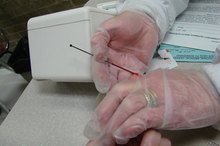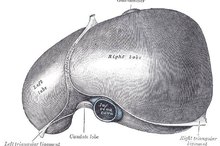What does fact checked mean?
At Healthfully, we strive to deliver objective content that is accurate and up-to-date. Our team periodically reviews articles in order to ensure content quality. The sources cited below consist of evidence from peer-reviewed journals, prominent medical organizations, academic associations, and government data.
The information contained on this site is for informational purposes only, and should not be used as a substitute for the advice of a professional health care provider. Please check with the appropriate physician regarding health questions and concerns. Although we strive to deliver accurate and up-to-date information, no guarantee to that effect is made.
What Does a High SGOT in a Liver Function Test Mean?
A Liver Function Test (LFT) is done to detect, diagnose, evaluate and monitor the presence of liver disease and/or damage. There are a number of different conditions and damage that can affect the liver. Results from an LFT that are outside the normal range may or may not mean you have liver disease or damage, but since liver disease can sometimes have no symptoms, testing is vital.
If you are experiencing serious medical symptoms, seek emergency treatment immediately.
How is a Liver Function Test Done?
A liver function test is done by drawing blood from your arm and analyzing it. Your doctor may require you to fast before the test and refrain from taking certain types of medication. An LFT checks the presence and levels of certain enzymes and proteins in your blood. How high or low the levels are can indicate a problem with your liver.
- A liver function test is done by drawing blood from your arm and analyzing it.
- An LFT checks the presence and levels of certain enzymes and proteins in your blood.
The SGOT Test
What Is a SGPT Blood Test?
Learn More
The SGOT (serum glutamic-oxaloacetic transminase) test, also known as an AST test, measures the amount of a protein enzyme called glutamic-oxaloacetic transaminase occurring in your blood. This enzyme is normally found in the liver, heart muscles, muscles and red blood cells. When these cells sustain damage, they release this protein enzyme into your blood.
Normal SGOT Levels
Normal SGOT levels for most adults range from 0 to 35 units per liter. But even if your SGOT level is normal, you may still need more tests, particularly if you are being tested for hepatitis C, which can sometimes show a normal SGOT level.
High SGOT Levels
What Does High Enzymes Mean?
Learn More
While even an SGOT that is mildly elevated is a reason for further testing, a high blood level of SGOT may indicate liver damage.
What Can Cause a High SGOT Level?
Causes for a high SGOT level can include:
- infection
- viral hepatitis
- mononucleosis
- gallbladder disease
- the presence of toxins from drugs or alcohol
- cancer
It may also indicate muscle damage from a fall or injury, or a muscle disease such as polymyositis or muscular dystrophy. And it can indicate problems with your kidneys, heart or pancreas, or a breakdown of red blood cells.
Dealing with a High SGOT Level
A high SGOT level will require more tests. For proper diagnose of many liver conditions, your doctor will require a full spectrum of Liver Function Tests 1.
Related Articles
References
- Mayo Clinic on Liver Function Tests
- Patient UK.doc on Abnormal Liver Function Tests
- U.S. Dept. of Veterans Affairs re: SGOT (AST) test results
- Cleveland Clinic. Cirrhosis of the Liver. Reviewed January 11, 2019.
- David S, Hamilton JP. Drug-induced Liver Injury. US Gastroenterol Hepatol Rev. 2010;6:73–80.
- American Liver Foundation. Medications.
- Cleveland Clinic Health Essentials. Is Acetaminophen Safe to Take When You're Drinking? Published December 19, 2017.
- University of Michigan, Michigan Medicine. Methyldopa. Revised September 17, 2018.
- Elsevier Science Direct. Hypervitaminosis A. Published 2015.
- National Center for Biotechnology Information, U.S. National Library of Medicine. LiverTox: Clinical and Research Information on Drug-Induced Liver Injury: Vitamin A. Updated December 3, 2013.
- National Center for Biotechnology Information, U.S. National Library of Medicine. LiverTox: Clinical and Research Information on Drug-Induced Liver Injury: Niacin. Updated February 2, 2014.
- Amathieu R, Levesque E, Merle JC, et al. Insuffisances hépatiques aiguës sévères d'origine toxique : prise en charge étiologique et symptomatique [Severe toxic acute liver failure: etiology and treatment]. Ann Fr Anesth Reanim. 2013;32(6):416–421. doi:10.1016/j.annfar.2013.03.004
- Devarbhavi H. An Update on Drug-induced Liver Injury. J Clin Exp Hepatol. 2012;2(3):247–259. doi:10.1016/j.jceh.2012.05.002
- Johns Hopkins Medicine. Drug-Induced Hepatitis.
Writer Bio
Kim Norton wrote for 25 years for an in-house securities research publication. She currently writes articles for Demand Studios that involve medical research, law and senior citizen concerns. She also writes radio advertising copy and opera librettos. A graduate of Westminster Choir College, Norton resides in Bayonne, N.J.








